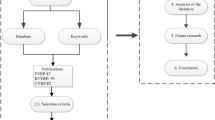Abstract
We derive an important property for solving large-scale integer programs by examining the master problem in Dantzig–Wolfe decomposition. In particular, we prove that if a linear program can be divided into subproblems with affinely independent corner points, then there is a direct mapping between basic feasible solutions in the master and original problems. This has implications for integer programs where the feasible region has integer corner points, ensuring that integer solutions to the original problem will be found even through the decomposition approach. An application to air traffic flow scheduling, which motivated this result, is highlighted.

Similar content being viewed by others
References
Appa, G.: Dantzig–Wolfe decomposition algorithm. Oper. Res. Q. 20(2), 275 (1969)
Barnhart, C., Johnson, E.L., Nemhauser, G.L., Savelsbergh, M.W.P., Vance, P.H.: Branch-and-price: column generation for solving huge integer programs. Oper. Res. 46(3), 316–329 (1998)
Bertsimas, D., Patterson, S.S.: The air traffic flow management problem with enroute capacities. Oper. Res. 46(3), 406–422 (1998)
Bertsimas, D., Tsitsiklis, J.N.: Introduction to Linear Optimization. Athena Scientific, Belmont (1997)
Bixby, R.E., Saltzman, M.J.: Recovering an optimal basis from and interior point solution. Oper. Res. Lett. 15, 169–178 (1994)
Dantzig, G.B., Wolfe, P.: Decomposition principle for linear programs. Oper. Res. 8(1), 101–111 (1960)
Gallier, J.H.: Curves and Surfaces in Geometric Modeling: Theory and Algorithms. Morgan Kaufmann, Burlington (1999)
Goncalves, A.: Basic feasible solutions and the Dantzig–Wolfe decomposition algorithm. Oper. Res. Q. 19(4), 465–469 (1968)
Goncalves, A.: Mr. goncalves replies. Oper. Res. Q. 20(2), 276 (1969)
Ho, J.K.: Recent advances in the decompostion approach to linear programming. Math. Program. Study 31, 119–127 (1987)
Ho, J.K., Loute, E.: An advanced implementation of the Dantzig–Wolfe decomposition algorithm for linear programming. Math. Program. 20(1), 303–326 (1981)
Megiddo, N.: On finding primal- and dual-optimal bases. ORSA J. Comput. 3(1), 63–65 (1991)
Rios, J., Ross, K.: Massively parallel Dantzig–Wolfe decomposition applied to traffic flow scheduling. J. Aerosp. Comput. Inf. Commun. 7(1), 32–45 (2010)
Tebboth, J.R.: A computational study of Dantzig–Wolfe Decomposition. PhD thesis, University of Buckingham (2001)
Vanderbeck, F.: Branching in branch-and-price: a generic scheme. Math. Program. 1–46 (2010)
Author information
Authors and Affiliations
Corresponding author
Rights and permissions
About this article
Cite this article
Rios, J.L., Ross, K. Converging upon basic feasible solutions through Dantzig–Wolfe decomposition. Optim Lett 8, 171–180 (2014). https://doi.org/10.1007/s11590-012-0546-9
Received:
Accepted:
Published:
Issue Date:
DOI: https://doi.org/10.1007/s11590-012-0546-9




